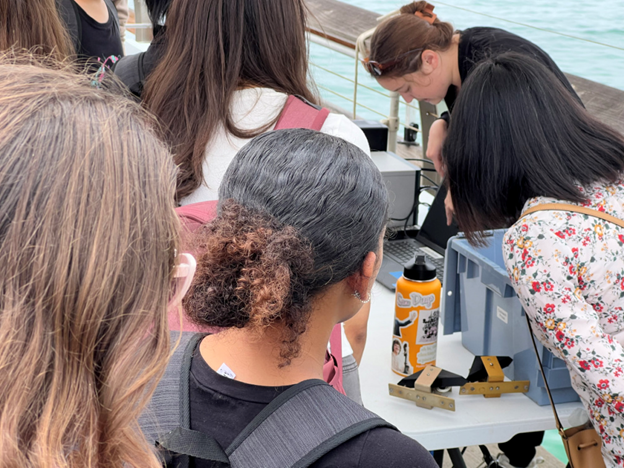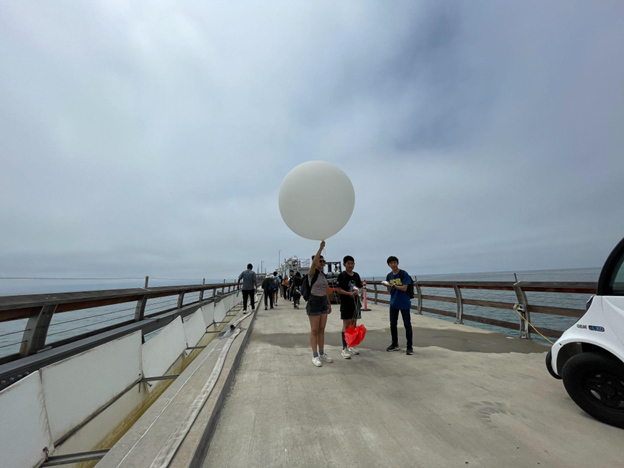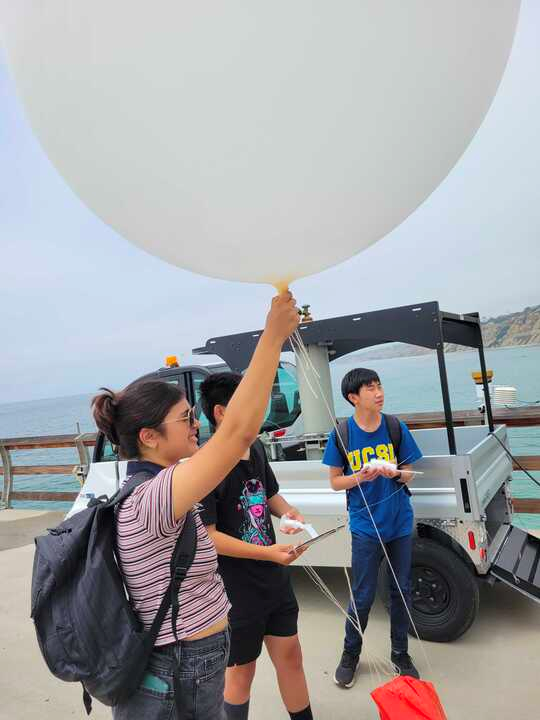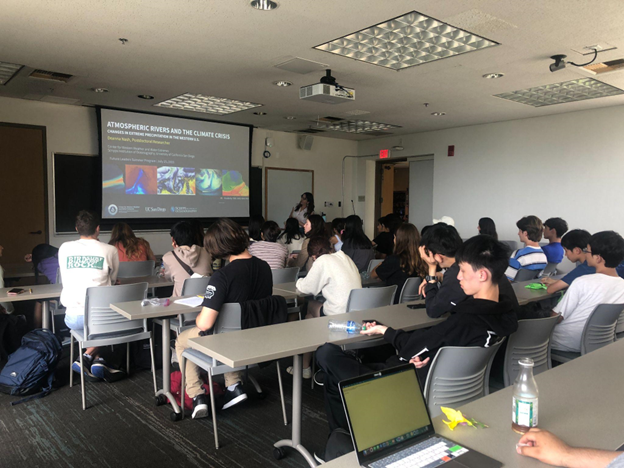CW3E Presents at UCSD’s Future Leaders Summer Program
July 25, 2023
CW3E hosted 32 international and domestic high school students attending the Future Leaders Summer Program for a session on Climate Crisis. The program is conducted by the 21st Century China Center and the Global Leadership Institute at the UC San Diego School of Global Policy and Strategy. The program is designed for high school students to develop problem-solving and diplomacy skills in global affairs, especially as they pertain to the roles of China, the U.S., Pacific and Indo-Pacific region countries including Mexico and India. The 2023 program focused on four critical issues: climate crisis, energy innovation (e.g., renewable energy, electric vehicles, etc.), artificial intelligence and global pandemics.
First, CW3E’s Douglas Alden and Ali Wolman led high school students from Global Leadership Institute in a weather balloon launch and a tour of the Ellen Browning Scripps Memorial Pier. The pier houses numerous environmental monitoring stations and enables small boat and scientific diving operations. During the group’s tour, students were able to see how busy a working research pier can get with cars, boats, golf carts, and people coming and going. Halfway down the pier, students gathered around CW3E’s weather station and Douglas introduced the sensors that observe variables including humidity, temperature, precipitation, and wind speed & direction. Students got an introduction to the technology used to set up and track the radiosonde sensor attached to the weather balloon. The group passed around example balloons and radiosondes, observed, and asked questions while Douglas and Ali prepared the weather balloon and radiosonde. Student volunteers from the Future Summer Leaders Program released the balloon on the group’s countdown.
Students continued their tour of Scripps Pier with a short talk from an Eastern Pacific Cloud Aerosol Precipitation Experience (EPCAPE) scientist about the work EPCAPE is doing studying aerosols in the atmosphere and their impact on cloud properties. Students continued to the end of the pier, where they saw the tide room. During the rainy season, CW3E keeps our radiosonde system set up there. In addition, students were able to see the saltwater intake that feeds saltwater tanks on campus including at the Birch Aquarium, the crane used to launch boats and lift them back onto the pier, and the staircase that lowers to the ocean surface to provide water access for researchers scuba diving around the pier.
After the pier tour, CW3E’s Deanna Nash was the guest speaker for the Interview with Experts in the Field: Climate Crisis and gave a presentation on some of the work the center is doing to improve the resiliency of different communities in the face of climate change. The presentation focused on several core areas of the center: precipitation extremes in the Western U.S., Forecast Informed Reservoir Operations (FIRO), Atmospheric River Reconnaissance, and climate science. Additionally, Deanna shared her experiences as a postdoctoral researcher at CW3E and summarized her current research on landslides, floods and avalanches triggered by precipitation in Southeast Alaska. Discussion with the students throughout the presentation dealt with many topics, including policy implications of scientific findings, building community resilience to extreme events due to climate change, and pathways to becoming a scientist. CW3E is grateful to have had the opportunity to interact with the intelligent and enthusiastic students.




